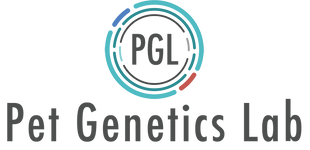The quality and accuracy of our testing is so important to us that we work to an international quality standard known as ISO17025. This is an international standard which has a number of principles:
- Capacity. Capacity refers to the laboratory's ability to perform testing and calibration activies effectively and efficiently. It goes beyond having physical resources and includes the availability of skilled personnel, suitable equipment, and appropriate facilities that meet the demands of clients and deliver accurate results. By maintaining a strong capacity, laboratories can establish themselves as trusted partners in their respective industries
- Exercise of Responsibility. This principle in ISO17025 underscores the crucial role laboratories play in ensuring the validitity and accuracy of their testing and calibration activities. It entails a diligent and accountable approach to laboratory operations, emphasising the need for careful adherence to established processes and procedures. Laboratories exercise responsibility by taking ownership of their work and striving for excellence in every aspect of their operations. By following the Scientific Method, laboratories can ensure the rigorous and consistent application of scientific principles in their operations. This principles encompasses several key aspects, including:
- Compliance with procedures
- Quality management system
- Employing competent and trained personnel
- Equipment maintenance and calibration
- Non-conformance management
- Ethical conduct
- Scientific Method. The scientific method is an organised and objective approach used in ISO17025 to ensure the accuracy and reliability of testing and calibration. it involves the following:
- Making observations and questioning
- Formulating hypotheses and literature review
- Conducting experiments
- Analysing data
- Drawing conclusions based on evidence
- Objectivity of results. The Objectivity of Results is another cruicial principle in ISO17025. It emphasises the need for impartiality and freedom from generation and interpretation biases. It also ensures that the reported data accurately reflects the characteristics of the sample being tested without any subjective influence or personal preferences. This committment to objectivity enhances the trustworthiness and credibility of the laboratory's work in the eyes of its clients and stakeholders. To uphold the Objectivity of Results, laboratories adhere to the following practices:
- Employ standardised test methods and calibration procedures
- Eliminate subjective influences
- Perform blind testing
- Implement quality control measures
- Review and verify the results
- Impartiality of conduct. Impartiality emphasises the need for laboratories to act in a neutral and unbiased manner throughout their testing and calibration activities. It ensures that the laboratory's decisions, actions and judgements are free from conflicts of interest and external influences, allowing for fair and objective results. Impartiality of conduct is maintained through the following practices:
- Avoidance of conflicts of interest
- Independence in decision-making
- Treat all clients and samples equally
- Maintan transparency
- Uphold an ethical conduct
- Traceability of Measurement. Traceability is the ability to link measurement results to national or international standards via an unbroken chain of comparisons. It involves establishing a clear and documented measurement chain, connecting the laboratory's measurement results to internationally recognised standards. By maintaining traceability, laboratories ensure that their measurements are consistent, comparable, and traceable to a known reference.
- Repeatability of Test. In ISO17025, Repeatability of Test focuses on the consistency and precision of test results when the same procedure is repeated under similar conditions. It ensures that the measurement or testing process produces reliable and consistent outcomes, allowing for the replication of results within an acceptable margin of error. here are key points to keep in mind regarding the Repeatability fo the test:
- Obtain consistent results
- Exercise control over relevant variables
- Adhere to standardised operating procedures
- Regular calibration and maintenance of testing equipment
- Invest in training the personnel
- Assess measurement of uncertainty
- Transparency of Process. Transparency of Process emphasises the importance of openness and clarity in the oeprations and procedures of a laboratory. it provides stakeholders, including clients and regulatory bodies, with comprehensive and accessible information about th elaboratory's processes, methodologies, and quality management systems. Here are the key aspects involved in the Transparency of Process:
- Clear communication
- Document methods and procedures
- Ensure quality and reliability
- Provide accreditation and certifications
- Generate detailed reports
- Facilitating external audits and inspects.
Conclusion
The ISO17025 Principles form the foundation for a robust quality management system. The Pet Gentics Lab embraces these principles and can demonstrate their commitment to excellence, continuous improvement, and adherence to international stands.
